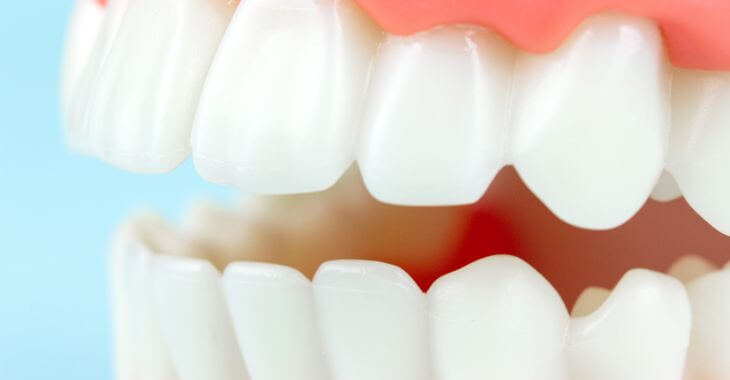Do You Have to Wear Retainers Forever?

After completing orthodontic treatment, many people wonder: Do you have to wear retainers forever? Whether you had braces or Invisalign, retainers play a crucial role in keeping your teeth aligned. Understanding why and how long you need to wear them can help you maintain your results.
Why Retainers Are Important After Braces or Invisalign
Once your braces or Invisalign treatment ends, your teeth are not completely set in their new positions. Without a retainer, they will slowly shift back to their original alignment. Retainers ensure your teeth stay straight and preserve the hard work you put into achieving a perfect smile.
- Braces: Teeth require time to stabilize in their new positions after braces. Retainers help the surrounding tissues adjust properly.
- Invisalign: Even though Invisalign aligners move teeth gradually, a retainer is still needed to maintain the final alignment.
So, do you have to wear retainers forever after braces or Invisalign? While wearing them full-time forever isn’t necessary, retainers are often a long-term necessity.
The Role of Teeth Memory
Your teeth have something called “memory.” Even after orthodontic treatment, teeth have a tendency to return to their original positions due to the surrounding gums, bones, and ligaments. This is called orthodontic relapse. Retainers essentially act as a safeguard to prevent this from happening.
While it’s easy to assume that once your teeth are straight, they’ll stay that way, the reality is that without retainers, changes are inevitable. This is why orthodontists emphasize the importance of wearing retainers regularly, even years after treatment.
How Long Do You Have to Wear Retainers?
The answer varies, but retainers are typically worn in two phases:
- Full-Time Wear: Right after braces or Invisalign, most orthodontists recommend wearing retainers all day and night for the first few months. During this phase, teeth are most likely to shift back, so constant use of retainers is essential.
- Night-Time Wear: After the initial phase, wearing retainers only at night usually becomes sufficient to maintain alignment. Night-time wear can often continue indefinitely.
Over time, you might reduce the frequency further, but discontinuing retainer use completely can cause teeth to shift. This is why it often feels like you have to wear retainers forever.
Retainer Schedules and Long-Term Use
While the general rule is to wear retainers indefinitely, many orthodontists will tailor a schedule that works for you. Some common approaches include:
- Wearing retainers every night for the first year.
- After a year, wearing retainers a few nights per week.
- Occasional wear is needed in the long term to monitor any changes.
The exact schedule depends on your teeth and how prone they are to shifting. Your orthodontist will guide you based on your unique needs.
How Long Do Retainers Last?
Retainers, like any other dental device, have a lifespan. Depending on the type, retainers can last anywhere from 1 to 10 years with proper care:
- Hawley Retainers: Made of metal and acrylic, they can last 5-10 years.
- Clear Plastic Retainers: These retainers often last 1-3 years before they wear out, crack, or lose their fit.
- Permanent Retainers: Bonded retainers, fixed behind the teeth, can last for many years but may require occasional repairs.
Taking care of your retainers is essential to ensure they last as long as possible. Clean them regularly with a gentle cleanser, avoid heat exposure (which can warp retainers), and store them properly when not in use. If you notice cracks, warping, or an improper fit, replace your retainers promptly.
Do You Really Have to Wear Retainers Forever?
The short answer is Yes, to some degree. While you may not need to wear your retainers 24/7 for life, wearing them consistently, especially at night, will keep your teeth from shifting. Without retainers, even perfectly straight teeth can gradually become misaligned.
Why Teeth Shift Over Time
As you age, changes in your jawbone, gums, and teeth alignment are natural. This can lead to small shifts, even in people who never had braces. Retainers counteract this gradual movement, preserving your alignment. Factors that may accelerate shifting include:
- Teeth Grinding: Clenching and grinding can cause pressure that moves teeth.
- Aging: The jawbone changes as you grow older, impacting teeth alignment.
- Tooth Loss or Wear: Missing teeth or uneven wear may cause surrounding teeth to shift.
Wearing retainers prevents these changes from affecting your smile. It’s a small effort with big benefits.
Tips for Lifelong Retainer Use
Wear your retainers as instructed by your orthodontist. Other tips include:
- Check their fit regularly. If they feel loose or tight, consult your orthodontist.
- Replace worn-out retainers promptly to avoid gaps in wear.
- Store retainers in a sturdy case to prevent loss or damage.
- Clean retainers daily to maintain hygiene and prevent odor.
The effort of wearing retainers a few nights a week is far less than going through orthodontic treatment again!

So, do you have to wear retainers forever after Invisalign or braces? While it may seem daunting, retainers are a small price to pay for a lifelong straight smile. By following your orthodontist’s guidance and maintaining your retainer, you can keep your teeth beautifully aligned for years to come.
Remember to care for your retainers, monitor their condition, and wear them as needed to ensure lasting results. After all, your smile is worth it! Whether you wore braces or Invisalign, your retainers are the key to preserving that perfect alignment for a lifetime.
The information provided on this website, including text, graphics, images, and other materials, is intended solely for informational purposes and should not be used as a substitute for professional medical advice, diagnosis, or treatment.




)